After our pleasant stay in Rothenburg, we knew that the Cologne Cathedral was next on our must-see list. However, upon looking at the map, we decided to make a quick detour to Luxembourg City, Luxembourg, because why not? If a brief stop in Luxembourg, which wasn’t incredibly out of the way, meant seeing an additional country, then we were game.
We also read that the cheapest gas in all of Europe could be found in Luxembourg. As we sluggishly drove our RV through the rolling hills between Western Germany and Luxembourg, we nervously kept an eye on the dropping gas gauge, keeping our fingers crossed that the final liters of our gas tank would take us across the border. Fortunately there were plenty of gas stations as we crossed the river into Luxembourg, and we filled up at € 0.86 per liter! Score! (And to my amusement, we were no longer in Germany. We were now in a French-speaking country, where Chris could practice his bad French.)
It was a Friday evening when we arrived at the outskirts of Luxembourg City, and we quietly boondocked in a posh neighborhood in Hesperange. That evening we researched parking and public transportation options and to our luck, we discovered that it was free on weekends to park at the giant Glacis parking lot just 1 km north of the city center! Normally on weekdays it costs €1.50/hour to park in the lot; otherwise a €4 bus day pass would have been another option.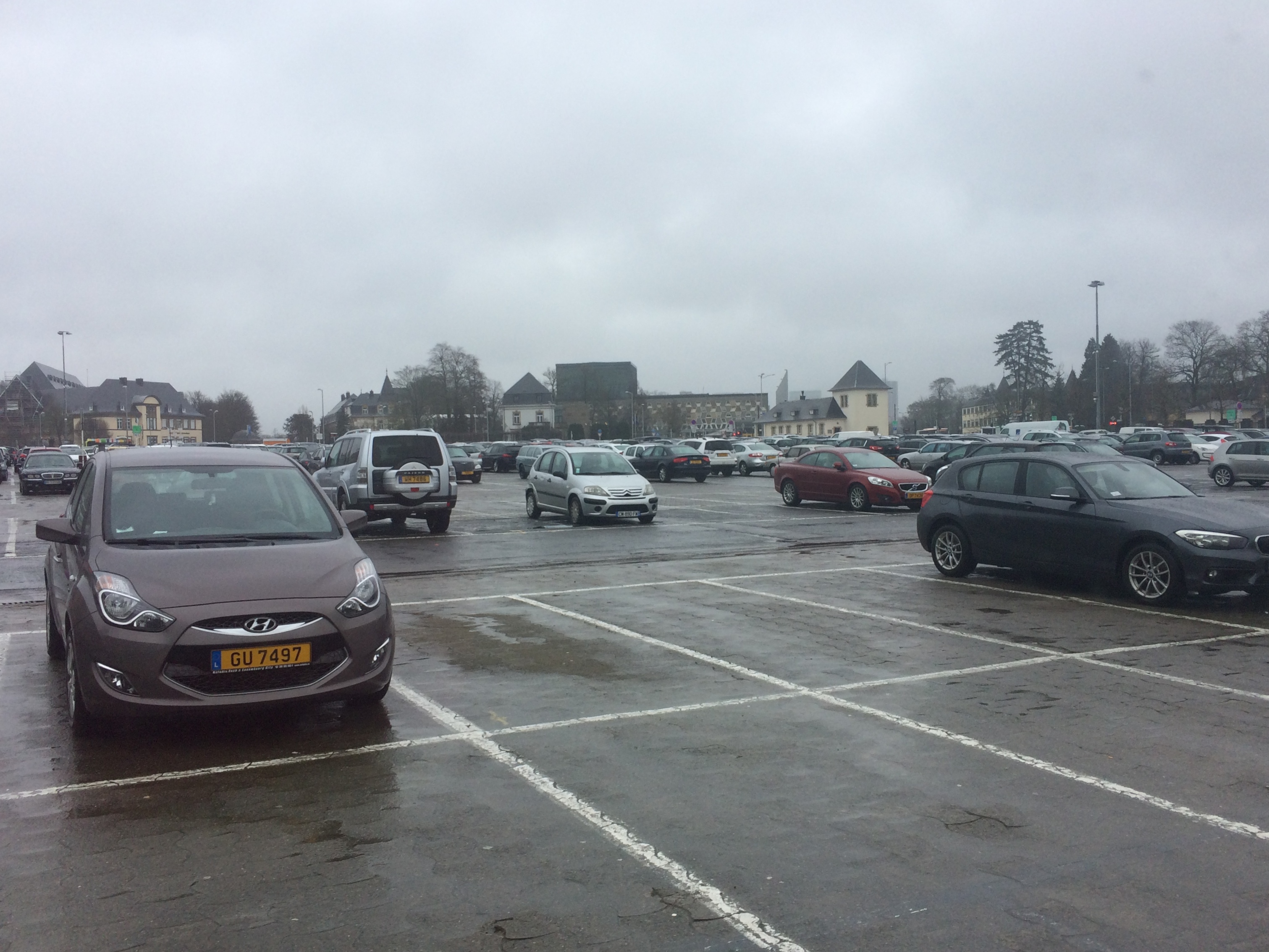
I’ll be honest. There wasn’t a whole lot to do in Luxembourg. With world-famous cities such as Amsterdam, Brussels, and Paris neighboring Luxembourg City, most people don’t even bother visiting one of the smallest countries in Europe (only after Liechenstein). Shopping and wandering seemed to be the primary attractions in this capital, and with our lack of interest in shopping we were left with wandering the streets. We knew absolutely nothing about the history of the city and country, and we were delighted to discover that modern day Luxembourg City was built upon the foundations of an ancient castle.
In 963, the count built a castle over a bock, a raised mass of land with only one steep side. This type of landscape offered a natural fortification for the city, and it was a gorgeous fortification indeed. Remnants of the castle and fortification laid scattered throughout the city, and both perspectives from the top-down and down-up offered picturesque views. A detailed sketch of the ancient city: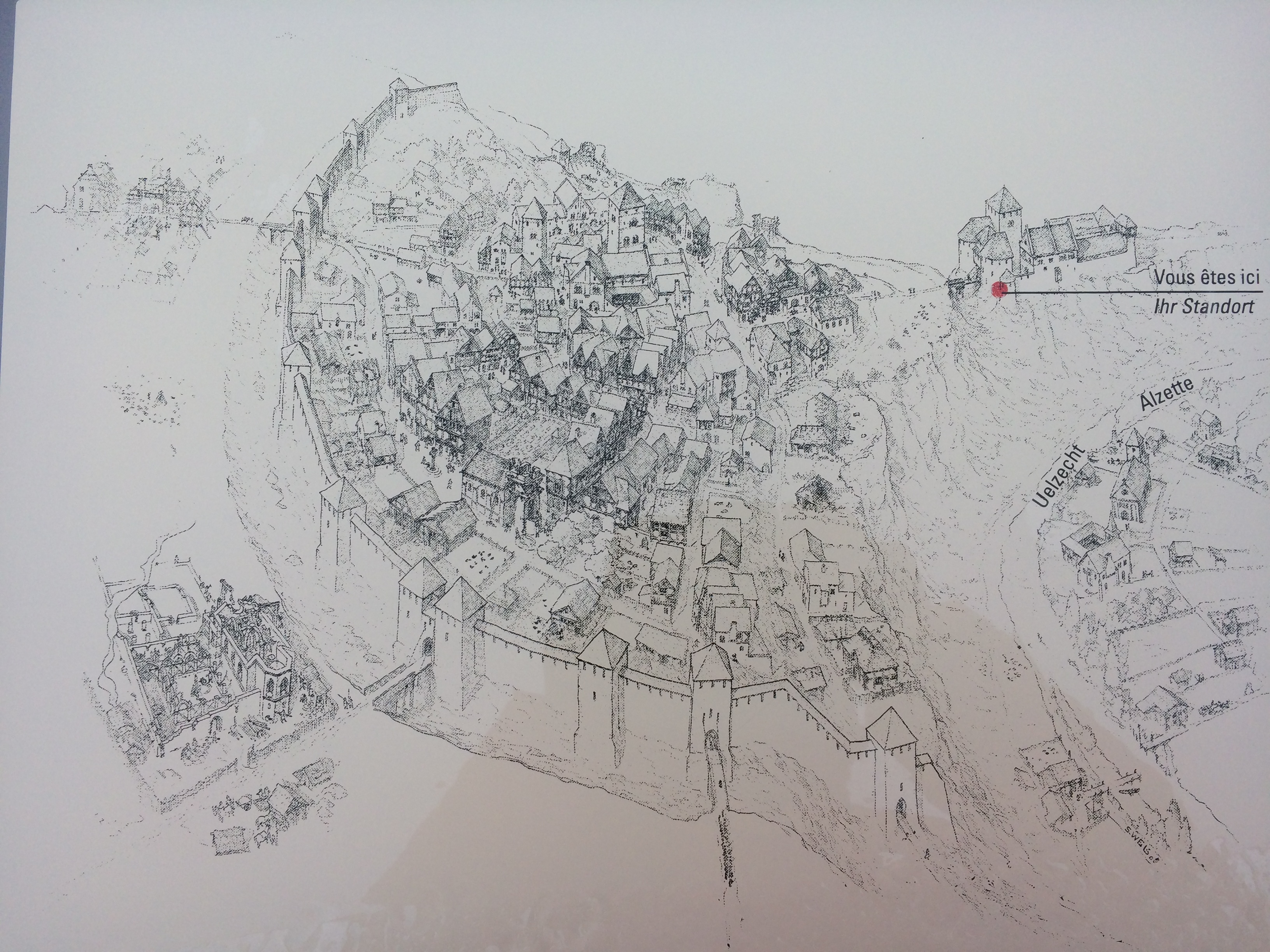
Views from the top, looking down into the suburb below:
The two-story bridge connecting the Bock to the old town, which was built in 1735: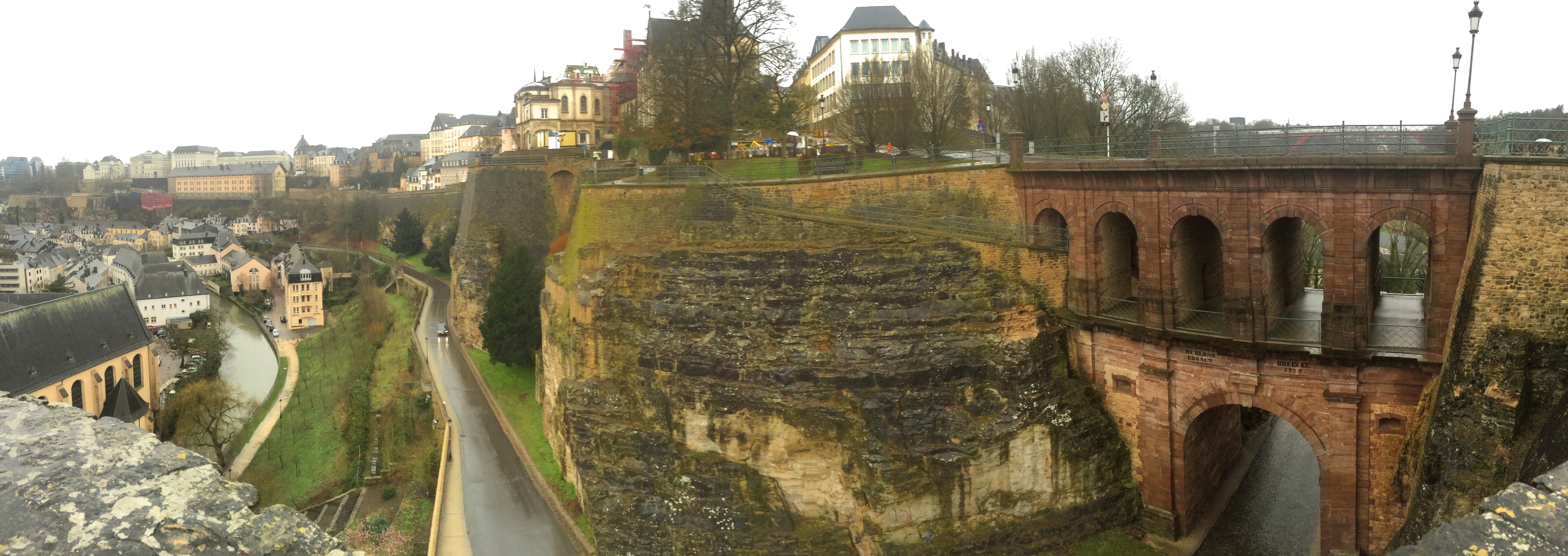
Strolling along the parks and streets of the suburb of Gerund and looking up at the fortification was definitely worthwhile. Walking down into Gerund: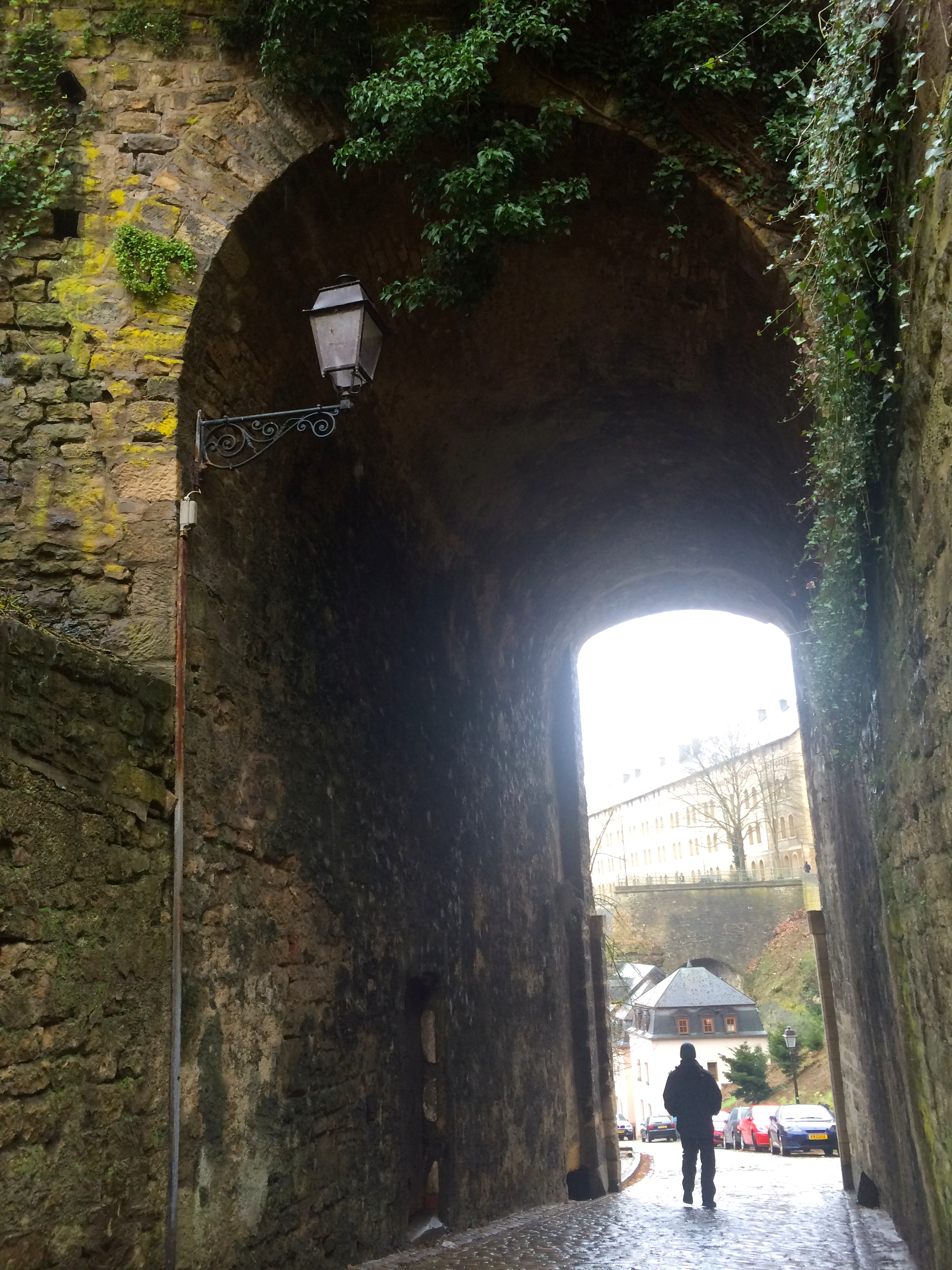
Views from beside the river:
And if you’re feeling lazy, you can take an elevator from the bottom back up to the top! 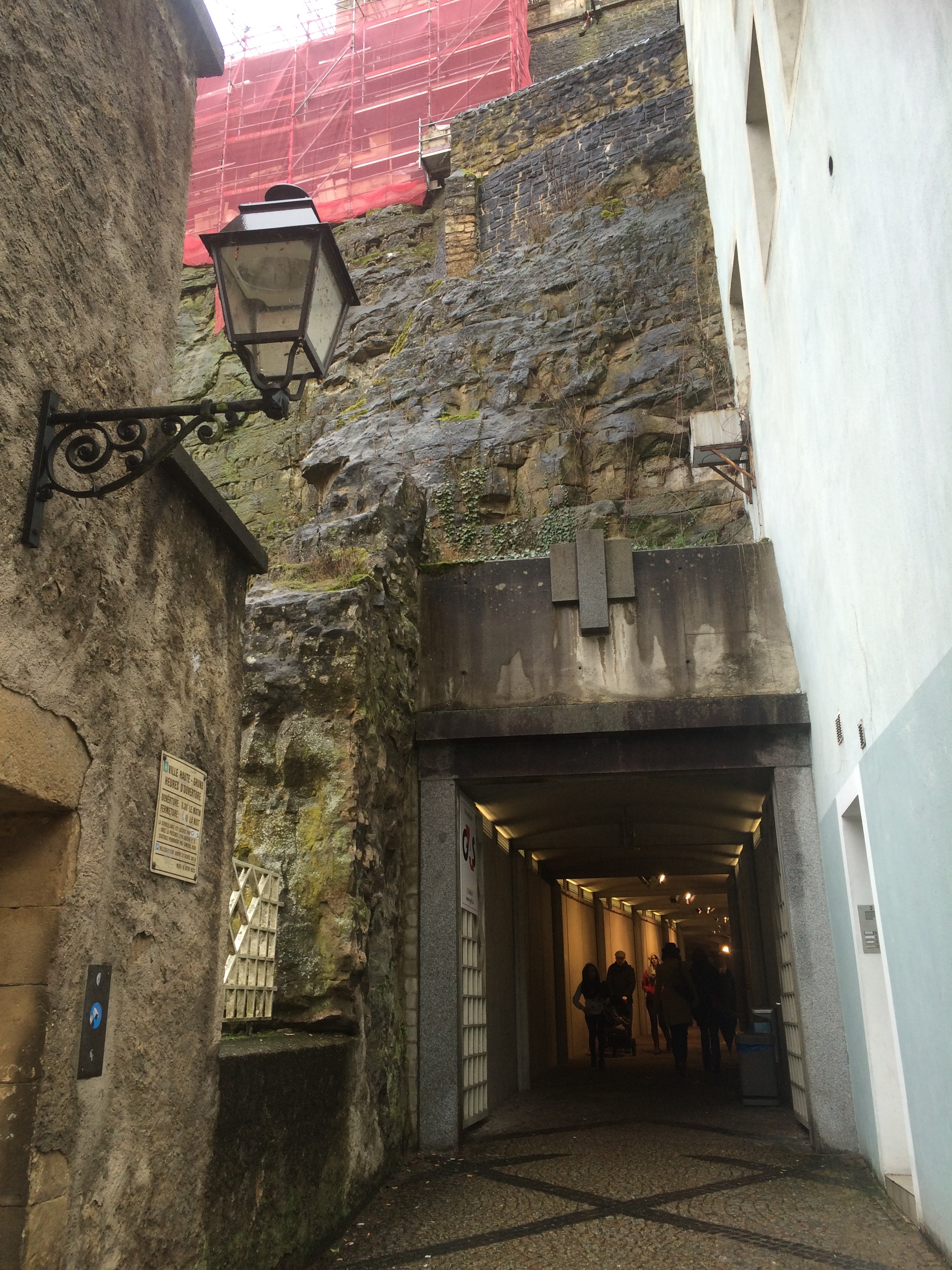
There were plenty of museums in town, and even a medieval castle to the north. Had we cared to spend more time in the country, we would have checked out the castle, but the detour to Luxembourg City was merely that–a brief detour. Thanks to the bock, the main attraction of the city, we were both glad we dropped by. Even on a drizzly February weekend, the bock was a beautiful site to admire. Had it been summer, with the hidden passageways open to the public, we would have enjoyed a picnic along the river. Albeit a tiny capital in a tiny country, it sure was a gorgeous one.

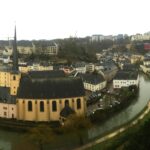
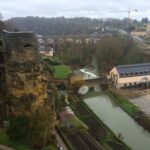
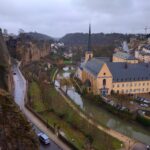
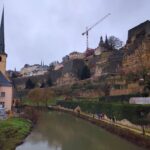
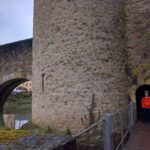
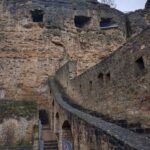
Pingback: Vaduz | Romping & Nguyening